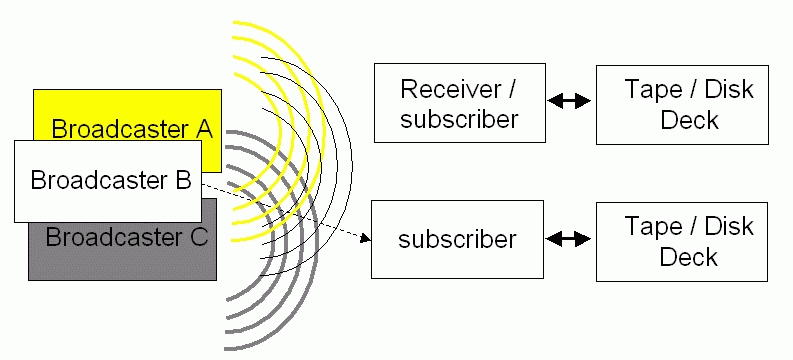
Old (and current)broadcasting model
notes about current and next (?) content distribution
current broadcasting style

Old (and current)broadcasting model
The first broadcast model, inherited from radio, unify network and content provider.
The customers (of public as well private nroadcasting) did not more than zap or, see a prerecorded, bought or rented content
or last use another multimedia source, such as a videogame
VoD let you watch only what broadcaster wants
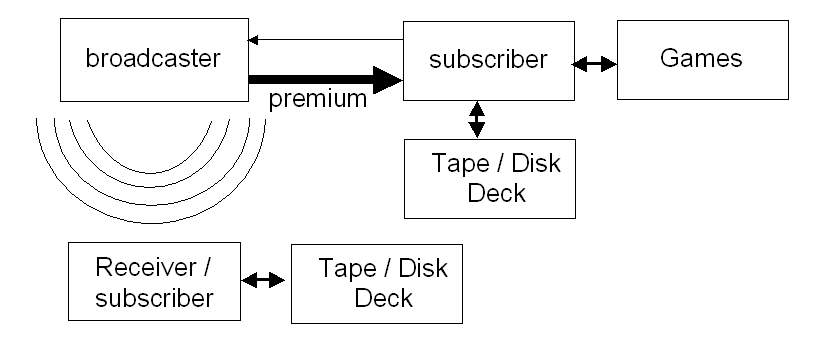
with current VoD you have anyway a limited choice
In the broadcasted near Video on Demand, the broadcaster purchase the rights of what placed on air select within specific time windows. This allows a
limited content choice: the user is free to choose only what the broadcaster allow her/him (by share or quality criteria typical of
the format/channel). It is similar to a video-rental, but with much much less choice. Even the begin is fixed by the broadcaster (the shorter the staggering time the bigger the number of channels required for the nVoD
The customer is usually a subscriber (in order to allow the generation of access words ECM/EMM) and in any case he need to have a smart card and receiver compatible with the conditional access used by the broadcaster
Usually the noD and VoD content are not recordable because the content owner usually require that the delivery platform is equipped with a copy protection system
As usual the subscriber can only watch something else, passing on another channel (or use something else connected to the Tv set aux inputs)
The premium live show are not really different from what wrote above. Please note that what said is walid for broadcast video (cable, Digital terrestrial, satellite), but also for IpTY whenever this simply
replicate what already distributed in the other ways without introducing relevant innovations.
User Generated Contents
Video over Ip, as further broadcast delivery platform (as usual done today), has a limited future. To use a point-to-point channel
to redistribute thousand times the same stream in multicast (but often the multicast stops at the edge routers, and the customers receive the feed in unicast) it is a useless waste of technology, excluding where is added an interactive shell
or because the stream come from a remote far source. Currenty the User Generated Contents is a hot subject: the higher and higher diffusion of broadband networks (usually asymmetric) allow to independent content producers lo load their media
on central server, that after will share them on demand on the web. Despite the amount of available services (anyone of us can easily receive many thousand of them),
broadcast television satisfy anyday less the subscriber. Then she/he look around. My doughters usually spent the evening chatting, swimming through the web (even together),
leaving us obsoletely alone to watch an even new movie in an old way or listening infinite talk shows.
In this perspective the unidirectional broadcasters cannot do more that ride the wave, acting as gateway between the users unequipped or unavailable to
choose by themselves (more or less stick to the sofa), while the percentage of net-active people is increasing.. Braodcast television race behind the quality cannot do miracles toward
the interactivity and the real choice of what you want when you want. The available channels do not warrant the quality of what distributed: all might become directors, but already with videocalls the viewers/actors become
source of content. Even for the news, a reporter will always be less required as geographical intermediate.
With the reduction of content production costs, it will be possible to personalize the videocalls, introducing
contents and effects bought or developed, and anyone of current instant messaging people will become a potential content provider.
Thus the current role of the broadcaster will disapper, if not for the lazy or un-connected customers. The current distribution of the User Generated Contents make the network provider angry, because YouTube (as well Google) do not pay the development and the mainenance of the network, but simply get the gain (through the advertisments)..
YouTube is not a peer-2-peer but a new-old content mediator with almost null purchasing costs (adn judjing from the gains, the connection costs must be anyhow limited peer2peer content exchange (ideal and real) Only with wideband symmetrical connections can be hypotysed a peer-to-peer user generated content distribution, otherwise content segmentation and caches are mandatory, as today happens in peer-2-peer musical tracks exchange
(thus independently on any consideration about its legality), or cannot stream in real time. Infact ADSL is asymmetric: it allows to download fastly but upload much slowly (even 1/10). This forbid the peer-2-peer node as a streaming server even for a small number of segments.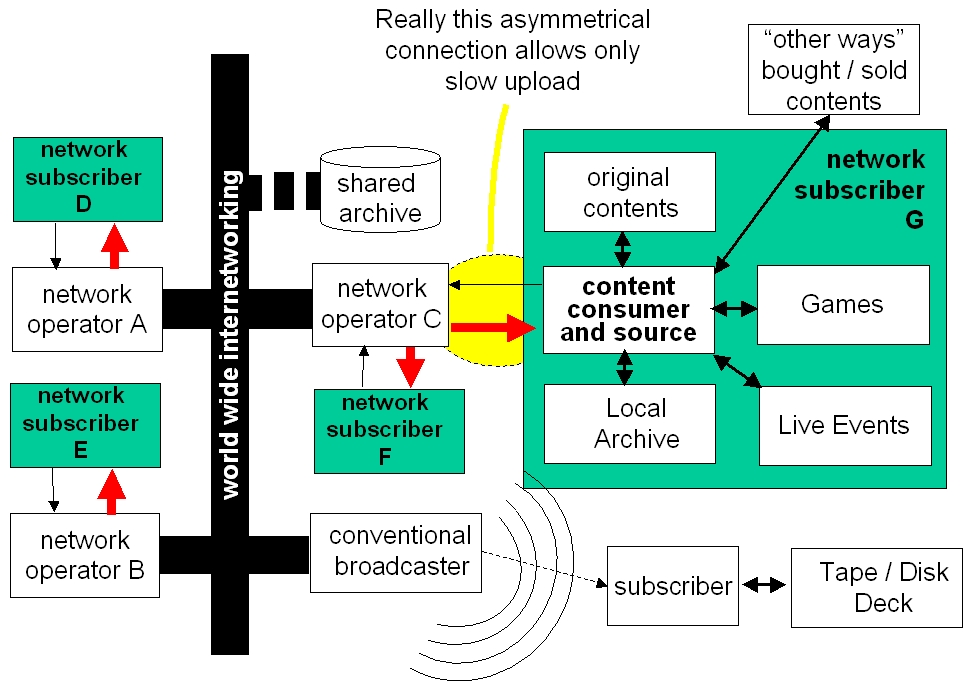
ideal user generated content scenario and
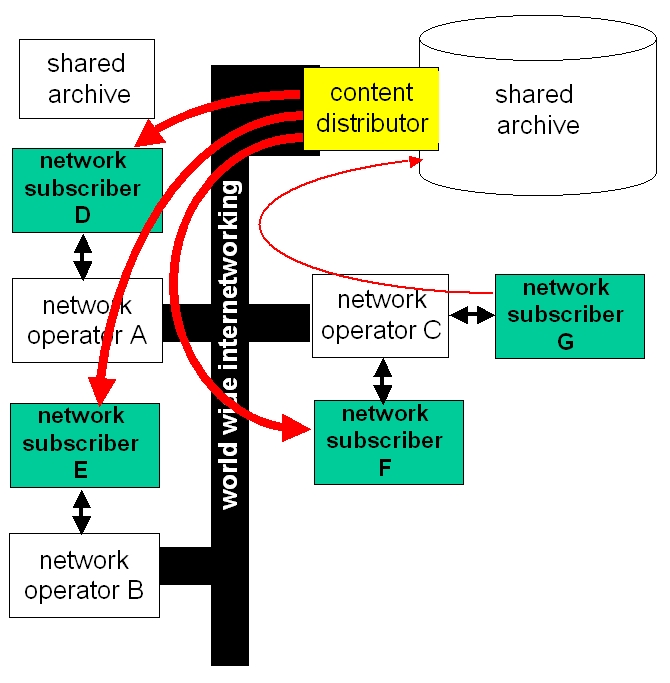
the real one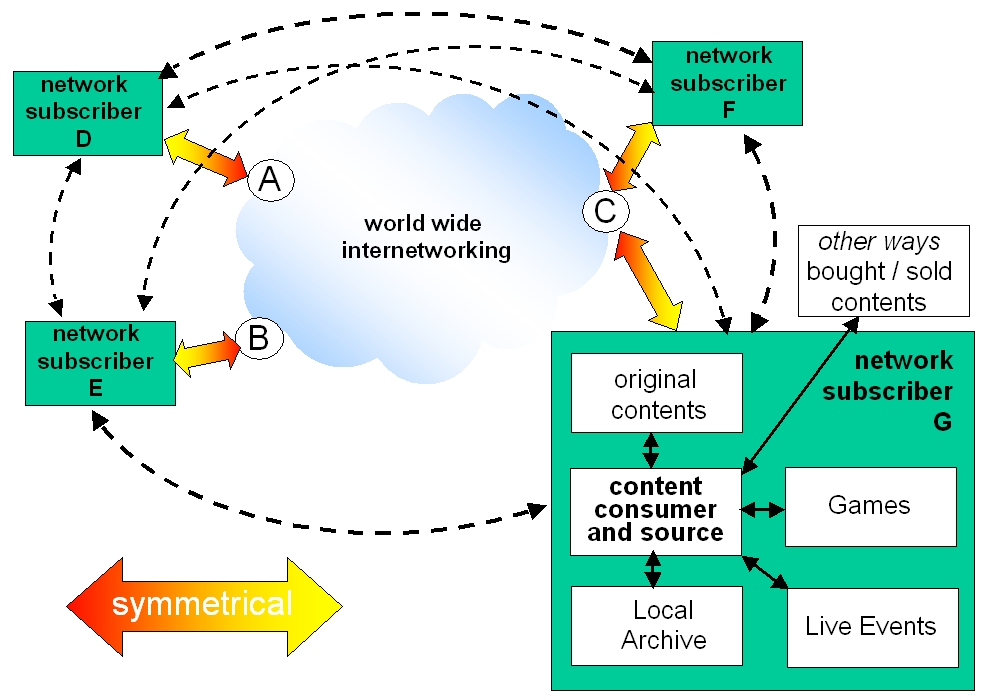
ideal (symmetrical) peer to peer contents exchange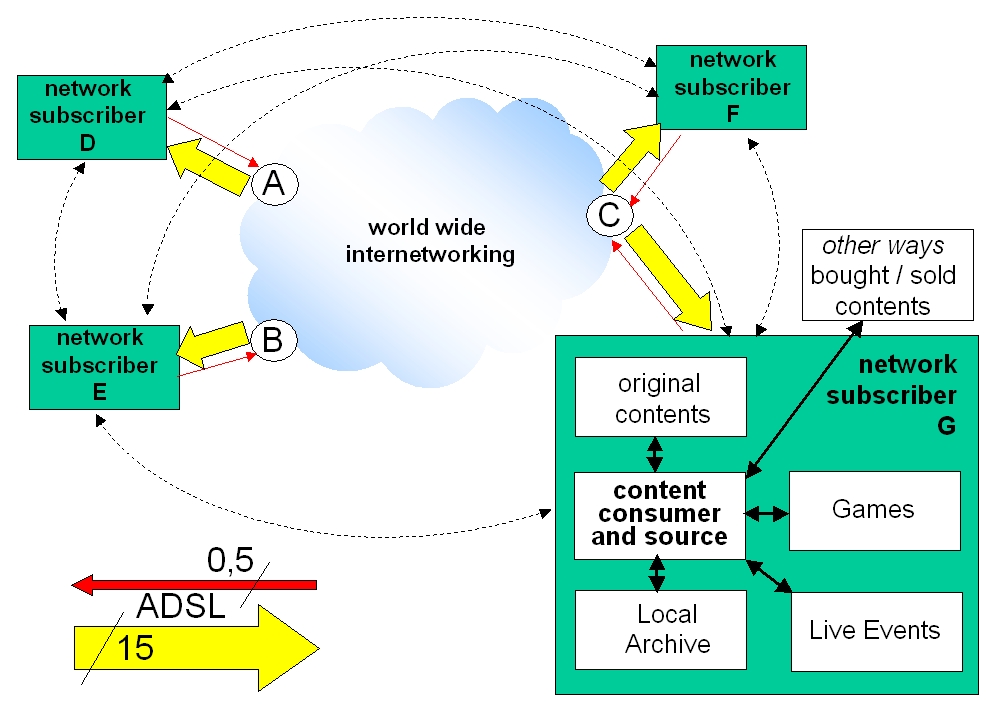
in presence of an Asymmetrical connection (ADSL)
back to home page